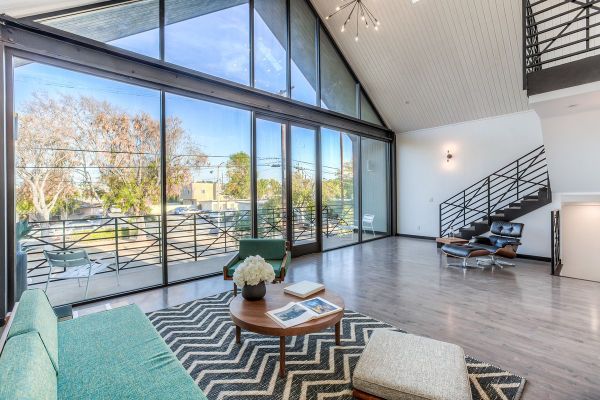The World Health Organization (WHO) establishes that any level of acoustic disturbance greater than 55 decibels can be detrimental to well-being. This shows that, sometimes we overlook, we must be fully aware of the importance of safeguard our home from the maximum amount of outside noise possible. Not only to guarantee an optimal rest, but also to promote general health.
It is vitally important to keep in mind that acceptable noise levels in a home are around 30 decibels (dBA), comparable to a whisper or a quiet chat in a library. However, in multiple cases, these standards are undermined by disturbing sounds, whether airborne (such as the rumble of traffic infiltrating through windows) or impact, those that arise as a result of falling objects or energetic footsteps that generate a sudden and shrill sound when colliding with the surface.
We must be fully aware of the importance of preserve our home from the maximum amount of external noise, with the purpose of raising our comfort and well-being. The latter are particularly complex to avoid and it is common to have to deal daily with the footsteps of the neighbor above, the noise of heels, objects falling to the ground or even the movement of pets from adjoining or higher homes. These uncomfortable situations can significantly alter our serenity and decrease quality of life within our own shelter.
Fortunately, there are specific techniques to effectively isolate noise coming from surfaces, in addition to reducing external noise, such as traffic. We will explore some of them below.
What are the most suitable materials to insulate the floor of our home and avoid outside noise?
The first option to consider to prevent the propagation of this type of noise is soundproof the floor of the house through the use of materials specially designed to resist compression. Otherwise, we could even be enhancing noise, since sound bridges could be created between homes.
There is a wide variety of materials, both synthetic and natural, that fulfill this function and are highly efficient for avoid impact noisesuch as felts and rubber.
Soundproof the house with materials specifically designed to resist compression is an essential aspect to prevent external noise. Another material that shows excellent results is open cell foam, which has pores that block and absorb unwanted sounds. They act like physical barriers that prevent the propagation of noise, allowing its absorption and reducing its presence in the environment. Likewise, they can be combined with a suitable finishing system or with the installation of a floating floor to obtain an even more effective result and achieve a more powerful acoustic barrier.
However, it is essential to bear in mind that the closer our action is to the origin of the problem, the more effective the solution will be. Therefore, if the noise comes from the neighbor above us, it is best for them to improve their own floor, instead of assuming it for us.
What other elements contribute to improving the acoustic insulation of the floors of our house?
Apart from everything mentioned above, it is important to know that there are decorative elements that also help reduce sound reverberationas is the case with carpets or other textiles, since they absorb sound and prevent the formation of spaces with echoes or excessive reverberation.
It is also important to note that when acoustically insulate the floor, we are adding an additional layer, which could increase the height of the ground by a few centimeters. This could involve the need to adjust doors or skirting boards. However, they are minor inconveniences, since the benefits obtained will outweigh the small adaptations required.
The rugs and other textiles help absorb sound and avoid the formation of spaces with echoes or excessive reverberation. In addition, if we are carrying out works, we can take the opportunity to review the general condition of the home or consider the installation of a radiant heating system, for example, to continue improving comfort and energy savings in our home.
In conclusion, a proper floor sound insulation Not only will it allow us to rest and sleep better, but it will also contribute to improving our quality of life in general. By implementing these techniques and using the right materials, we can create a quieter home free of disturbing noise, which It will promote our health and well-being in the domestic sphere.
